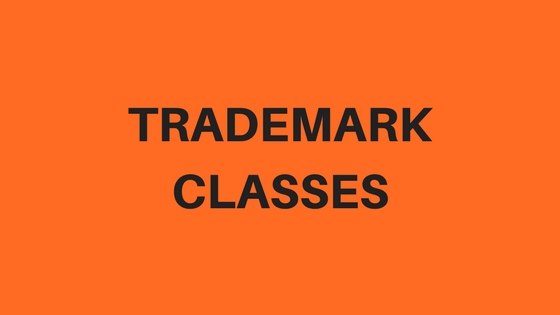A trademark is a unique symbol, name, word, or logo used to identify and distinguish goods or services from those of others. In India, trademarks are protected by the Trademark Act, 1999, which provides for the registration and protection of trademarks in the country. Trademarks in India are classified into various classes based on the type of goods or services they represent. Let’s take a closer look at the different classes of trademark in India.
Class 1: Chemicals and Chemical Products
This class includes chemicals used in industry, science, photography, agriculture, horticulture, and forestry. Examples of goods in this class include chemicals used in the manufacture of plastics, artificial resins, and fibers.
Class 2: Paints, Coatings, and Pigments
This class includes paints, varnishes, lacquers, and colorants used for industrial purposes. It also includes wood preservatives, anti-rust preparations, and fire extinguishing compositions.
Class 3: Cosmetics and Cleaning Products
This class includes products used for personal hygiene and beauty, such as perfumes, soaps, shampoos, and cosmetics. It also includes cleaning preparations, polishing preparations, and laundry detergents.
Class 4: Fuels and Lubricants
This class includes industrial oils, greases, and fuels, such as gasoline, diesel, and kerosene. It also includes lubricants for machinery and motors.
Class 5: Pharmaceuticals and Medical Supplies
This class includes pharmaceuticals, medical and veterinary preparations, and sanitary preparations for medical purposes. Examples of goods in this class include vitamins, medicines, and medical devices.
Class 6: Metal Goods
This class includes metals and alloys used in industry and construction, as well as small hardware items, such as screws, nails, and nuts.
Class 7: Machinery and Machine Tools
This class includes machines, machine tools, and motors used in industry, agriculture, and construction. Examples of goods in this class include engines, pumps, and agricultural implements.
Class 8: Hand Tools and Implements
This class includes hand tools and implements used in agriculture, horticulture, and forestry. Examples of goods in this class include axes, knives, and saws.
Class 9: Computers and Electronic Goods
This class includes computers, computer software, electronic devices, and telecommunication equipment. Examples of goods in this class include smartphones, laptops, and tablets.
Class 10: Medical and Surgical Instruments
This class includes medical and surgical instruments, apparatus, and appliances. Examples of goods in this class include dental instruments, surgical gloves, and medical syringes.
Class 11: Lighting and Heating Equipment
This class includes lighting apparatus and installations, as well as heating and cooling equipment. Examples of goods in this class include light fixtures, air conditioning units, and heaters.
Class 12: Vehicles and Transportation Equipment
This class includes vehicles, such as cars, motorcycles, and bicycles, as well as their parts and accessories. It also includes trailers and other vehicles designed for transportation.
Class 13: Firearms and Explosives
This class includes firearms, ammunition, and explosives. Examples of goods in this class include guns, ammunition, and fireworks.
Class 14: Precious Metals and Jewelery
This class includes precious metals, such as gold and silver, as well as jewelery and precious stones. Examples of goods in this class include necklaces, rings, and bracelets.
Class 15: Musical Instruments
This class includes musical instruments and their accessories. Examples of goods in this class include guitars, drums, and pianos.
Class 16: Paper Goods and Printed Matter
This class includes paper and cardboard products, as well as printed matter, such as books, newspapers, and photographs. Examples of goods in this class include writing paper, notebooks, and envelopes.
Class 17: Rubber Goods
This class includes rubber products, such as hoses, gaskets, and pipes. It also includes goods made of vulcanized rubber, such as rubber mats and flooring.
Class 18: Leather Goods
This class includes leather and imitation leather goods, such as bags, wallets, and belts. It also includes animal skins and hides.
Class 19: Building Materials and Non-Metallic Goods
This class includes building materials, such as cement, bricks, and tiles. It also includes non-metallic pipes, such as PVC pipes, and non-metallic transportable buildings.
Class 20: Furniture and Furnishings
This class includes furniture and furnishings, such as chairs, tables, and beds. It also includes cushions, pillows, and curtains.
Class 21: Housewares and Glass
This class includes household and kitchen utensils, such as pots, pans, and kitchen knives. It also includes glassware, such as drinking glasses, vases, and bowls.
Class 22: Cordage and Fibers
This class includes ropes, twines, and cords made of natural or synthetic fibers. It also includes raw textile materials, such as cotton, wool, and silk.
Class 23: Yarns and Threads
This class includes yarns and threads for textile use. It also includes sewing threads, embroidery threads, and knitting yarns.
Class 24: Fabrics
This class includes textile fabrics for use in the manufacture of clothing and household goods. Examples of goods in this class include cotton fabrics, silk fabrics, and synthetic fabrics.
Class 25: Clothing and Apparel
This class includes clothing, footwear, and headgear for men, women, and children. Examples of goods in this class include shirts, pants, dresses, and shoes.
Class 26: Fancy Goods and Accessories
This class includes decorative items, such as ribbons, lace, and embroidery. It also includes buttons, zippers, and other fasteners used in the manufacture of clothing.
Class 27: Carpets, Rugs, and Mats
This class includes carpets, rugs, and mats made of textile or non-textile materials. It also includes linoleum and other materials used for covering floors.
Class 28: Games and Toys
This class includes toys, games, and playthings for children and adults. Examples of goods in this class include board games, puzzles, and action figures.
Class 29: Meats and Processed Foods
This class includes meat, fish, poultry, and other foods that have been processed or preserved. It also includes edible oils and fats.
Class 30: Staple Foods
This class includes basic foodstuffs, such as grains, pasta, and bread. It also includes spices, condiments, and seasonings.
Class 31: Agricultural Products
This class includes agricultural and horticultural products, such as fruits, vegetables, and grains. It also includes live animals and plants.
Class 32: Non-Alcoholic Beverages
This class includes non-alcoholic beverages, such as soft drinks, fruit juices, and mineral water.
Class 33: Alcoholic Beverages
This class includes alcoholic beverages, such as beer, wine, and spirits.
Class 34: Tobacco and Smokers’ Articles
This class includes tobacco products, such as cigarettes, cigars, and pipe tobacco. It also includes smokers’ articles, such as ashtrays and lighters.
Class 35: Advertising and Business Services
This class includes services related to advertising, business management, and office functions. Examples of services in this class include market research, business consulting, and personnel recruitment.
Class 36: Insurance and Financial Services
This class includes services related to insurance and financial affairs. Examples of services in this class include banking, investment services, and insurance underwriting.
Class 37: Construction and Repair Services
This class includes services related to building construction and repair, such as carpentry, plumbing, and electrical work.
Class 38: Telecommunications Services
This class includes services related to telecommunications, such as telephone and internet services.
Class 39: Transportation and Storage Services
This class includes services related to transportation and storage of goods and people. Examples of services in this class include courier services, freight transport, and vehicle rental.
Class 40: Material Treatment Services
This class includes services related to the treatment of materials, such as metal plating and textile treatment.
Class 41: Education and Entertainment Services
This class includes services related to education and entertainment, such as organizing of cultural and sports events, training and education courses, and publication of books, newspapers, and magazines.
Class 42: Scientific and Technological Services
This class includes services related to scientific and technological research and development, such as software development, engineering services, and design services.
Class 43: Hotel and Restaurant Services
This class includes services related to providing food and accommodation, such as hotels, restaurants, and catering services.
Class 44: Medical and Beauty Services
This class includes services related to medical and beauty services, such as medical clinics, beauty salons, and hairdressing services.
Class 45: Personal and Legal Services
This class includes services related to personal and legal affairs, such as legal services, security services, and personal and social services rendered by others to meet the needs of individuals.
It is important to choose the appropriate class for your trademark when registering it, as it will help to identify and protect your intellectual property. A clear and specific description of the goods or services for which the trademark is being registered is also crucial. Additionally, it is important to conduct a thorough search to ensure that the proposed trademark does not infringe on the rights of existing trademarks in the same or related classes. With the proper planning and guidance, registering a trademark can help to protect your brand identity and establish your business in the market.

